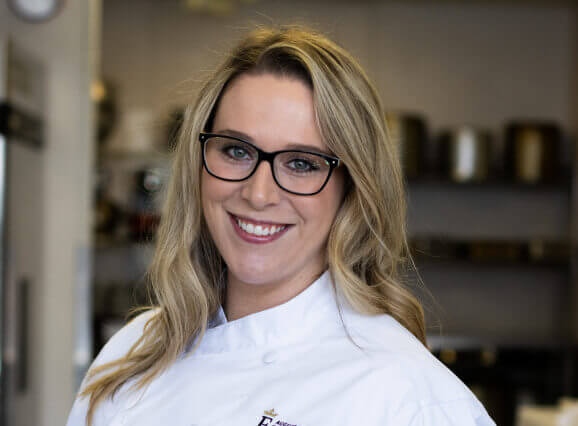Listen to This Article:
If your goal is to one day be a professional cook or chef, you have to start somewhere. But even if you want to learn the basics of cooking simply so you can cook for yourself, you’re in the right place!
When you learn how to cook, you can save money by preparing food at home, rather than eating out. You can also control what goes into each plate of food, which can help you eat a healthier, more balanced diet.
And as your skills grow, you may soon feel more comfortable welcoming friends and family to enjoy a meal with you. People have been gathering around home-cooked meals for thousands of years, and it’s still one of the best ways to share the love with those closest to you. Use this guide as a jumping-off point to a future of fine cooking!
Make Sure You Have Some Essential Kitchen Tools and Utensils
You can’t cook without the right tools. You don’t need anything fancy to start, but you will need some basics.
One of the most important items on the list is a quality set of knives. There is no need to purchase a wide variety of tools. Most tasks can be accomplished well with just a chef’s knife, paring knife, and serrated knife. You’ll also need a cutting board for a chopping surface.
Food-safe wood, composite, or plastic materials are all great choices. You may want to avoid cutting on surfaces such as glass or stone, as they can dull and damage your knives. Always check that your cutting board is free of cracks or damage, as even small surface defects can harbor bacteria that can cause food-borne illness.
For the actual cooking, you’ll need a couple of pots and pans. Stainless steel cookware is good for almost all purposes. Start with a simple set: a stock pot, sauté pan, and saucepan. You’ll also want sheet pans for roasting and baking. You may want a nonstick pan for eggs and delicate seafood, but take care to avoid high-heat cooking and metal utensils in your non-stick pans, as even minor scratches can ruin their non-stick abilities.
Other items that you may need include:
- Measuring cups
- Measuring spoons
- Kitchen scale
- Mixing bowls
- Colander
- Vegetable peeler
- Grater
- Whisk
- Spatulas
- Can opener
You may also need some storage containers for leftovers. As you progress, you may build your kitchen toolkit with specialty items like an immersion circulator used in sous vide cooking, a pressure cooker, or an immersion blender. But you can start making simple recipes with just the basics!
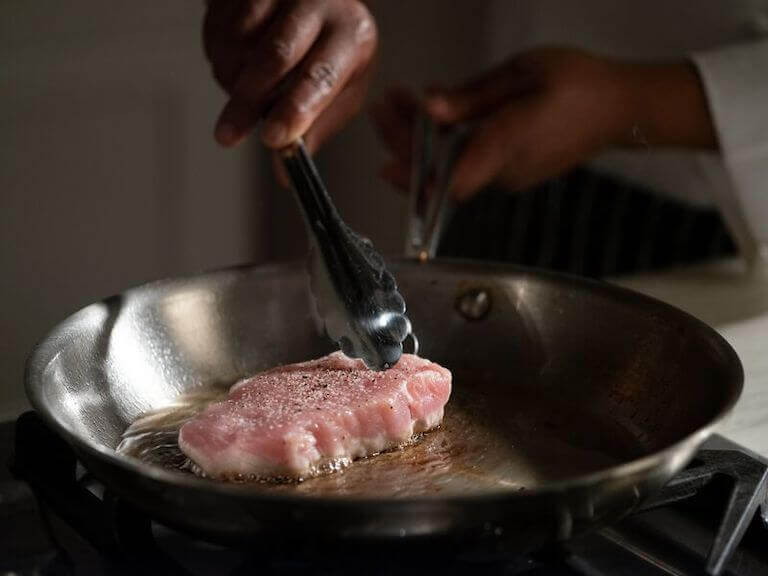
Stainless steel pots and pans make optimal all-purpose cookware.
Stock Up on Basic Ingredients
Cooks often purchase perishable items for each specific recipe. But pantry staples like oils, dry goods, and seasonings can be bought in advance.
One of the essential ingredients for any type of cuisine is fat. Whether it’s olive oil, vegetable oil, coconut oil, butter, or lard, they all have different ideal uses and flavor profiles and can work in both savory and sweet dishes. Other staples include dried herbs and spices like garlic, onion powder, oregano, paprika, and cumin. These can add lots of flavor and complexity to your recipe.
Finally, don’t forget about salt—it brings out flavors and helps enhance the taste of a dish. There are a dozen different types of salt, but versatile kosher salt and simple sea salt are fine for beginners!
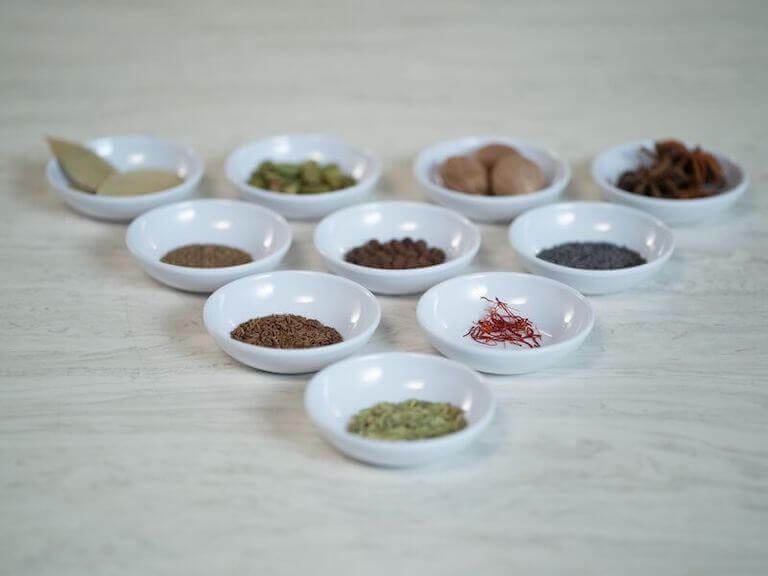
Spices and other shelf-stable ingredients will be integral to your cooking.
Practice the Fundamental Cooking Methods and Techniques
The “cooking” part of cooking is really a long list of different techniques. Boiling, simmering, poaching, steaming, roasting, baking, grilling, broiling, frying, sauteing, and combination techniques like braising are all unique methods used for different results.
Boiling is perhaps the simplest of all cooking methods, cooking food in hot liquid like water or stock at a temperature of at least 212°F.
Simmering and poaching are methods similar to boiling, in that they are moist-heat methods achieved in hot liquid, however they are executed at lower temperatures; Simmering is achieved at a temperature of around 180°F- 200°F, and poaching is done at a temperature between 160°F and 180°F.
Steaming is a fourth moist-heat method that is achieved by allowing hot vapor generated from liquid to cook the food, and it’s considered one of the gentlest cooking methods.
Baking and Roasting involve applying dry, radiant heat uniformly to food from all sides, using an oven or other indirect heat source.
Grilling and broiling are similar to roasting in that they use radiant heat, but directly and at much higher temperatures, often reaching up to 500°F (260°C).
Frying cooks food fully submerged in hot oil.
And sautéeing is done in a pan with just a small amount of oil, usually on the stovetop.
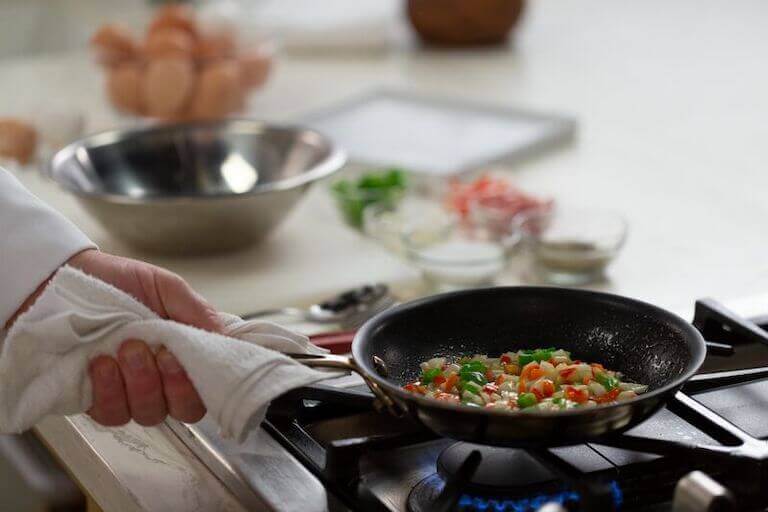
Get the pan nice and hot before adding oil or butter for a good sauté.
In addition to these traditional cooking methods, there are also more modern techniques such as sous vide—a French cooking process that involves vacuum sealing food in an airtight bag and then cooking it submerged in a water bath that is maintained at a constant low temperature, allowing the food to maintain moisture and concentrate flavors.
The best way to practice these techniques is to…use them! Look for recipes that utilize each method so you can get used to them.
You can also practice a variety of cooking methods in culinary school. Students in the various programs at Auguste Escoffier School of Culinary Arts may practice many different cooking methods and learn to practice refined judgment with their techniques, deciding when it is ideal to bake, to roast, or even when to grill for the best results.
Following Recipes and Understanding Measurements
Expert cooks can whip up a delicious meal without a recipe, simply pulling from their vast culinary knowledge. But learning how to cook for beginners usually requires following recipes. Relying on recipes from reputable sources may save you a lot of trial and error. Here’s what you need to know.
Read the Whole Recipe
Before you brandish a knife or preheat the oven, read the entire recipe! It’s heartbreaking to spend an hour on dinner prep just to realize that your meat has to marinate overnight.
Read the entire recipe thoroughly to make sure that you have all the tools and ingredients you’ll need, and that there are no timing surprises that will have your meal finished at midnight.
Make Sure You Know What Those Abbreviations Mean
Recipe ingredients are often written in shorthand. And if you mistake t (teaspoons) for T (tablespoons), you may be in for a disappointing dish.
Here’s a helpful table of measurement abbreviations that may prevent mishaps.
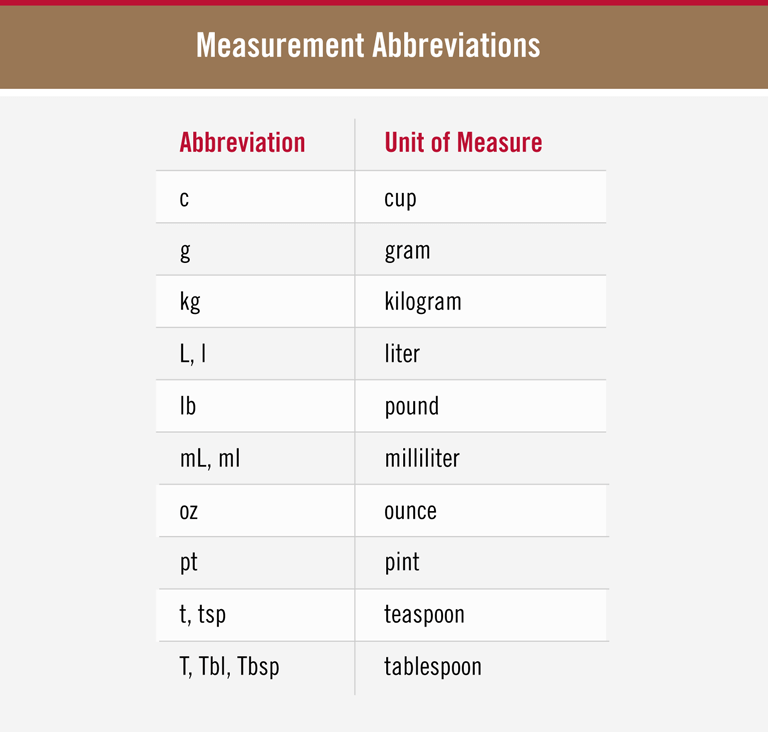
Then, there are your conversions. How many teaspoons are in a tablespoon? How many cups are in a pint? Here’s another handy table:
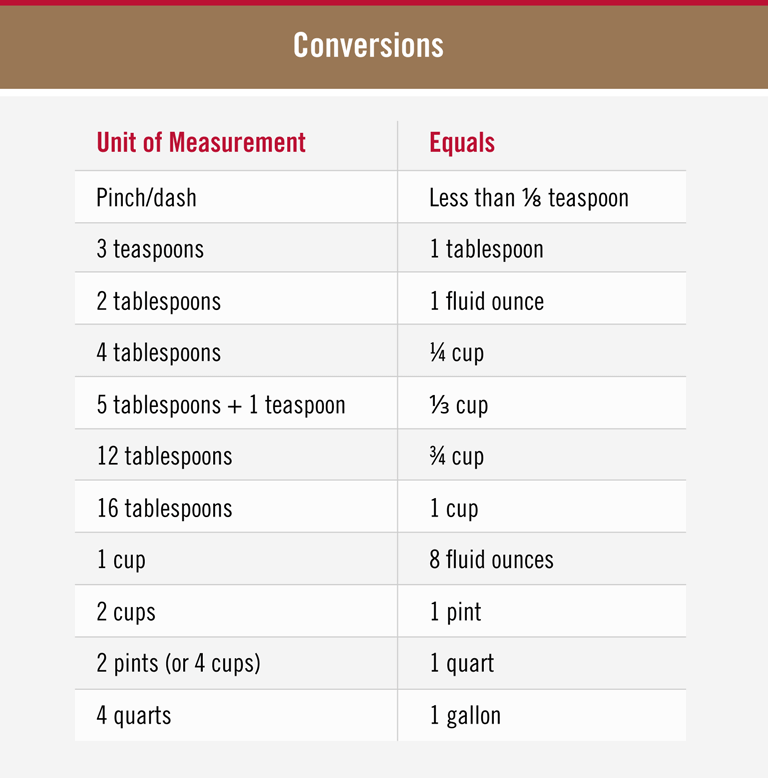
When measuring your ingredients by volume, use dry measuring cups for dry ingredients (like flour or sugar) and liquid measuring cups for wet ingredients (like stock or milk). And when measuring your dry ingredients, always level off the excess with the back of a knife or a metal spatula.
Some recipes, especially those involving baking and pastry, rely on measurements by weight for the highest accuracy. Know the difference between “fluid ounces”, a volume measurement (such as 1 cup=8 fluid ounces) and “ounces”, a weight measurement (such as 16 ounces = 1 pound).
With many ingredients, weight and volume measurements are not interchangeable. It helps to have a kitchen scale handy for accurate measuring when a recipe calls for weighing ingredients.
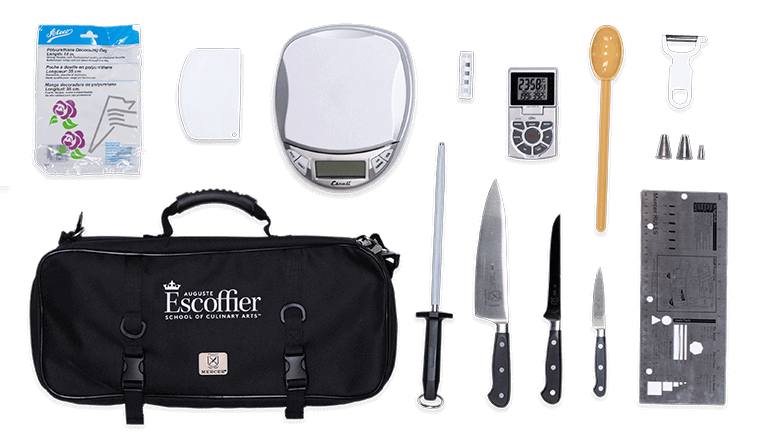
Escoffier students receive a toolkit that may include helpful measuring tools like a kitchen scale
Prep Your Ingredients Before You Start Cooking
It can be tempting to multitask, chopping vegetables while the chicken browns or mincing herbs while the carrots soften. But beginners can easily mistime how long it will take to do their prep work. The result could be overcooked meat and undercooked veggies.
So do what they do in professional kitchens—prepare your mise en place in advance. Mise en place means “everything in its place” and refers to all of the pre-cooking work. It includes gathering your tools, measuring out your ingredients, and doing any prep work, like chopping carrots or trimming meat.
When this is all done in advance, it makes the cooking part a snap!
Mise en place is one of the first techniques that students may learn at Escoffier in their foundational cooking class. Making this practice second nature prepares students for working like a professional!
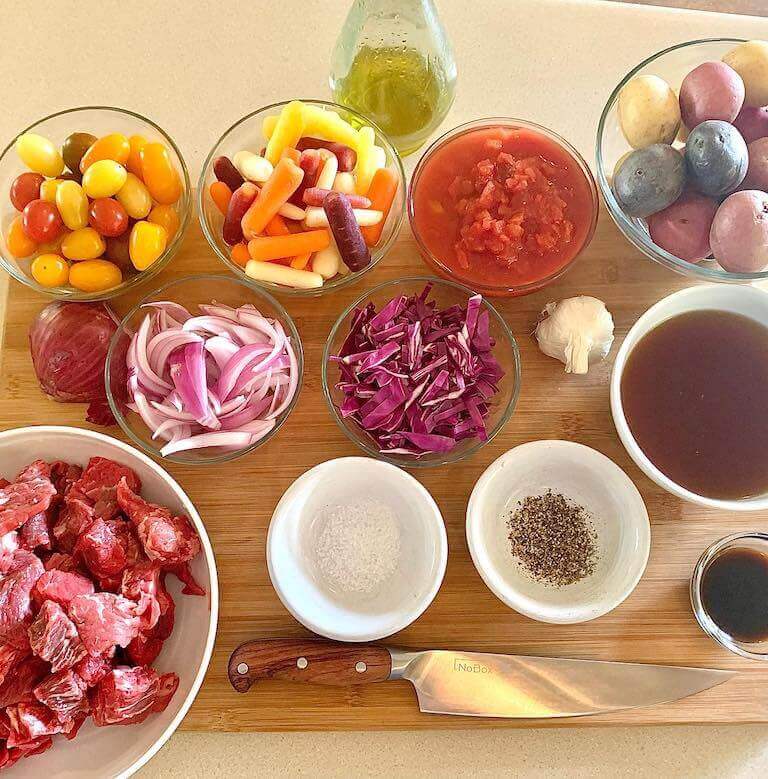
An online Escoffier student’s mise en place for beef stew.
Avoid These Common Cooking Mistakes
A recipe will tell you a lot, but it won’t tell you everything. Avoid these common mistakes for a better result!
Underestimating How Long You’ll Need
Cooking takes time. There’s preparation, the actual cooking, and clean up afterward. Underestimating how long you’ll need to prepare a dish can cause cooking stress and grouchy diners.
Many recipes include a time estimate…but they are often referring to cook time, ignoring the prep work entirely! If you rely on the time listed on the recipe, you may end up eating much later than you planned.
So take prep time, cook time, and clean-up time into account when estimating how long your meal will take. Cleaning as you go can help to cut down the timeline. Once that roasting pan goes in the oven, you can load the dishwasher, hand wash pots and pans, and wipe down countertops.
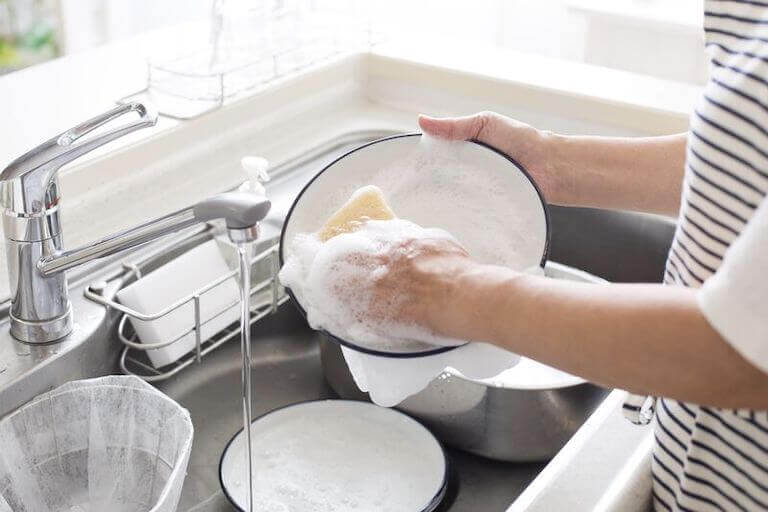
Clean as you go to cut down on your overall cooking time.
Overcrowding Your Pan
Overcrowding your pan is an easy mistake to make. When you pack too much food into a small space, it may cook unevenly. Plus, overcrowding can cause steam to build up, which could prevent the food from browning as it should.
Use pans with plenty of room for your ingredients to spread out. If necessary, cook in batches! This can also leave you space for stirring or turning your ingredients, without spilling them over the side of the pan and onto your cooktop.
Only Seasoning at the End
When you wait until the end of the cooking process to add your salt, the flakes just sit on top of the dish. But when you add a bit of salt at each stage of the cooking process, you’re letting the salt impact the way the dish cooks.
When you salt meat before cooking, it can dissolve and get absorbed into the protein. Adding salt to raw vegetables when you put them in the sauté pan or baking dish can draw out the liquid, resulting in a more flavorful morsel.
So add pinches of salt throughout the cooking process, and always remember to taste at every step to ensure proper seasoning and flavor development, just like the pros do.
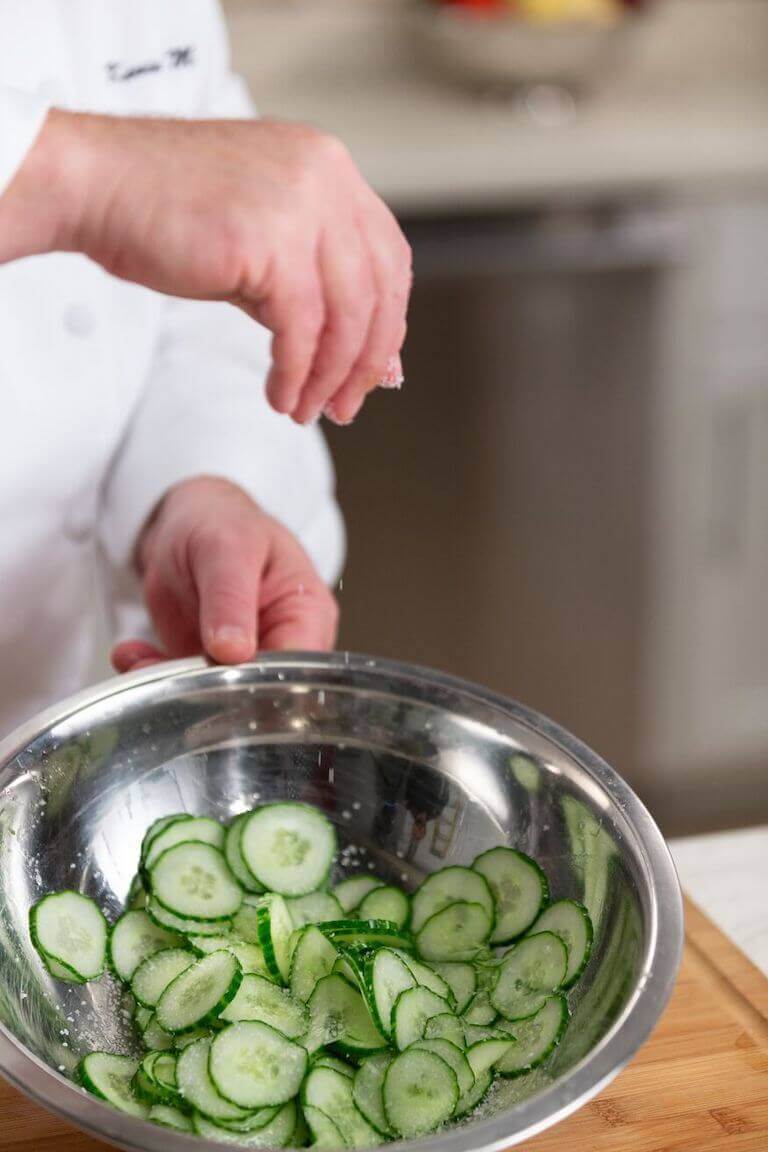
Salting cucumbers helps draw out the moisture.
More Resources for Beginner Cooks
Want to learn more? These resources may help novice cooks as they navigate the wide world of culinary knowledge.
Cookbooks by Expert Chefs
Cookbooks are a great resource for beginner cooks! They provide step-by-step instructions (often backed up by photos) and may include helpful background information beyond recipes. For example, Samin Nosrat’s Salt, Fat, Acid, Heat cookbook is full of recipes, but it’s also packed with approachable science and useful tips.
Cookbooks are also wonderful if you’re interested in learning more about a particular type of cooking or a specific cuisine. There are cookbooks dedicated to pizza, Chinese wok cooking, vegan cakes, and vegetarian recipes–in short, there are cookbooks for just about any specialty.
An Accredited Culinary School
For a fully immersive experience taught by professional Chef Instructors, the answer is often culinary school. Escoffier offers degrees and diplomas in culinary arts, baking & pastry arts, plant-based culinary arts, hospitality and restaurant operations management, holistic nutrition and wellness, and food entrepreneurship, depending on the campus–Escoffier has campus locations in Austin, TX and Boulder, CO, as well as online options.
While the specifics of each program vary, each includes a foundational education in cooking from mise en place through more advanced topics. And students may also take courses in business topics like Menu Design & Management and Cost Control, so they can prepare for work in a professional kitchen.*
When choosing a culinary school, look for accreditation. Accredited schools have the endorsement of regional and/or national institutions, verifying that they meet certain high standards. Both our Austin and Boulder campuses are nationally accredited, and our online programs are offered through our Boulder campus.
While it’s possible to learn on your own—or to learn in the workplace—there may be no faster way to learn to cook than attending culinary school.*
*Information may not reflect every student’s experience. Results and outcomes may be based on several factors, such as geographical region or previous experience.
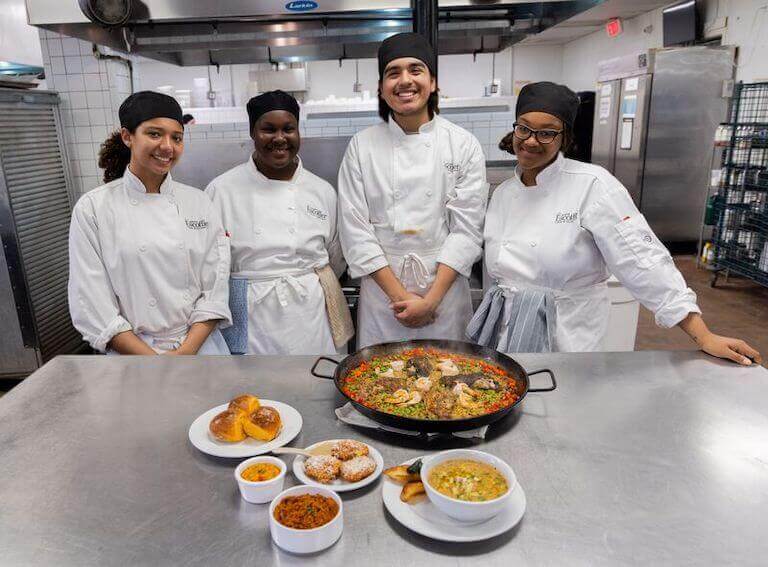
Escoffier students in Austin proudly presenting paella.
Go Beyond the Basics
Many of the skills and techniques described above can be explored in Escoffier’s culinary arts classes. But that’s only the beginning of how to cook. After the basics, there’s so much more to learn. Baking and patisserie. Cuisines from around the world. Sourcing seasonal ingredients. And the business side of the culinary industry, like management and marketing.
So if you’re interested in getting beyond “beginner,” culinary school may be the right place for you.* Contact us to learn more about what you can learn—and where it can take you!
TO LEARN MORE ABOUT CULINARY EDUCATION, TRY THESE ARTICLES NEXT:
- What Are the Different Chef Certifications?
- Why Study at a French Culinary Institute?
- Escoffier 101: Everything You Need to Know About Culinary School
*Information may not reflect every student’s experience. Results and outcomes may be based on several factors, such as geographical region or previous experience.

